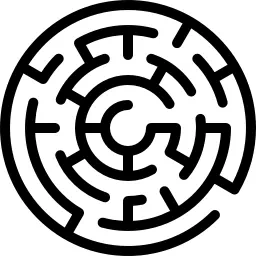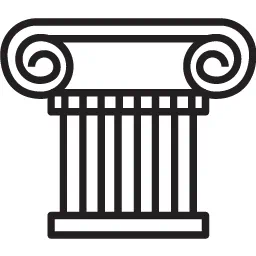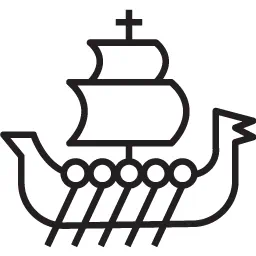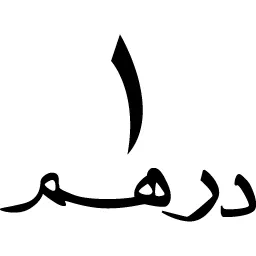The Emirate of Crete was an Islamic state that existed on the island of Crete from the late 820s to 961. Although the emirate recognized the suzerainty of the Abbasid Caliphate and maintained close ties with Tulunid Egypt, it was de facto independent.
A group of Andalusian exiles led by Abu Hafs Umar al-Iqritishi conquered Crete in either 824 or 827/828 and established an independent Islamic state. The Byzantines launched a campaign that took most of the island back in 842-43 under Theoktistos, but the reconquest was not completed and would soon be reversed. Later attempts by the Byzantine Empire to recover the island failed, and for the approximately 135 years of its existence, the emirate was one of the major foes of Byzantium. Crete commanded the sea lanes of the Eastern Mediterranean and functioned as a forward base and haven for Muslim corsair fleets that ravaged the Byzantine-controlled shores of the Aegean Sea. The emirate’s internal history is less well known, but all accounts point to considerable prosperity deriving not only from piracy but also from extensive trade and agriculture. The emirate was brought to an end by Nikephoros Phokas, who successfully campaigned against it in 960–961, re-annexing the island to the Byzantine Empire.
History
Crete had been raided by Muslim forces since the first wave of the Muslim conquests in the mid-7th century. It first experienced a raid in 654 and then another in 674/675, and parts of the island were temporarily occupied during the reign of the Umayyad Caliph al-Walid I (r. 705–715). However, the island at that time was not conquered and despite occasional raids in the 8th century, it remained securely in Byzantine hands; Crete was too far from the Arab naval bases in the Levant for an effective expedition to be undertaken against it.
Conquest of Crete
At some point in the second half of the reign of Byzantine Emperor Michael II (r. 820–829), a group of Andalusian exiles landed on Crete and began its conquest. These exiles had a long nomadic history. Traditionally they have been described as the survivors of a failed revolt against the emir al-Hakam I of Córdoba in 818. In the aftermath of the revolt’s suppression, the citizens of the Córdoban suburb of al-Rabad were exiled en masse. Some settled in Fez in Morocco, but others, numbering over 10,000, took to piracy, probably joined by other Andalusians. They landed in Alexandria and took control of the city until 827, when they were besieged and expelled by the Abbasid general Abdullah ibn Tahir al-Khurasani. As W. Kubiak points out, however, the supposed origin from Córdoba is contradicted by other sources, which record the presence of Andalusian corsairs in Alexandria as early as 798/9, and their takeover is dated to 814, before the revolt took place; furthermore, the Andalusians’ leader, Umar ibn Hafs ibn Shuayb ibn Isa al-Balluti, commonly known as Abu Hafs, came from a locality (Fahs al-Ballut, now Los Pedroches) that was far from Córdoba.
The exact chronology of the Andalusians’ landing in Crete is uncertain. Following the Muslim sources, it is usually dated to 827 or 828, after the Andalusians’ expulsion from Alexandria. Byzantine sources, however, seem to contradict this, placing their landing soon after the suppression of the large revolt of Thomas the Slav (821–823). Further considerations regarding the number and chronology of the Byzantine campaigns launched against the invaders and prosopographical questions of the Byzantine generals that headed them have led other scholars like Vassilios Christides and Christos Makrypoulias to propose an earlier date, c. 824. Under the terms of their agreement with Ibn Tahir, the Andalusians and their families left Alexandria in 40 ships. Historian Warren Treadgold estimates them at some 12,000 people, of whom about 3,000 would be fighting men. According to Byzantine historians, the Andalusians were already familiar with Crete, having raided it in the past. They also claim that the Muslim landing was initially intended as a raid, and was transformed into a bid for conquest when Abu Hafs himself set fire to their ships. However, as the Andalusian exiles had brought their families along, this is probably a later invention. The Andalusians’ landing-place is also unknown; some scholars think that it was at the north coast, at Suda Bay or near where their main city and fortress Chandax (Arabic: ربض الخندق, romanized: rabḍ al-kḫandaq, lit. ’Castle of the Moat’, modern Heraklion) was later built, but others think that they most likely landed on the south coast of the island and then moved to the more densely populated interior and the northern coast.
As soon as Emperor Michael II learned of the Arab landing, and before the Andalusians had secured their control over the entire island, he reacted and sent successive expeditions to recover the island. Losses suffered during the revolt of Thomas the Slav hampered Byzantium’s ability to respond, however, and if the landing occurred in 827/828, the diversion of ships and men to counter the gradual conquest of Sicily by the Tunisian Aghlabids also interfered. The first expedition, under Photeinos, strategos of the Anatolic Theme, and Damian, Count of the Stable, was defeated in open battle, where Damian was killed. The next expedition was sent a year later and comprised 70 ships under the strategos of the Cibyrrhaeots Krateros. It was initially victorious, but the overconfident Byzantines were then routed in a night attack.
Krateros managed to flee to Kos, but there he was captured by the Arabs and crucified. Makrypoulias suggests that these campaigns must have taken place before the Andalusians completed their construction of Chandax, where they transferred the capital from the inland site of Gortyn.
Effects of the Arab Conquest
The conquest of Crete by the Arabs had several significant effects:
- Shift in the balance of power in the Eastern Mediterranean: The conquest of Crete was a major blow to the Byzantine Empire and shifted the balance of power in the Eastern Mediterranean in favor of the Muslims.
- Increased piracy and raids: The Emirate of Crete became a base for Muslim pirates and corsairs who raided Byzantine territories in the Aegean Sea, disrupting trade and causing significant damage.
- Economic and agricultural development: The Emirate of Crete experienced a period of economic and agricultural prosperity, due in part to its strategic location and trade links with the rest of the Muslim world.
- Cultural exchange: The Emirate of Crete was a melting pot of different cultures, with a mix of Arab, Berber, and Byzantine influences.
Reclaim of Crete by the Byzantines
The Byzantine Empire never gave up on its attempts to reconquer Crete. In 960, Emperor Romanos II appointed the general Nikephoros Phokas to lead a new expedition to retake the island. Phokas assembled a large army and navy and set sail for Crete. After a long and arduous campaign, Phokas was able to defeat the Arabs and recapture Chandax in 961. The reconquest of Crete was a major victory for the Byzantine Empire and restored its control over the Aegean Sea.
Archaeological Signs of the Emirate
Unfortunately, not many signs of the Arab period of Cretan history are visible today. The Byzantines, after retaking the island, engaged in a deliberate campaign to erase the traces of Muslim rule. Many buildings and structures from the Emirate period were destroyed, and mosques were converted into churches. However, some archaeological evidence of the Emirate period has been found in recent years, including coins, pottery, and the remnants of buildings. These findings provide valuable insights into the history and culture of the Emirate of Crete.
Conclusion
The Emirate of Crete was a significant chapter in the history of Crete. It was a period of both challenges and opportunities for the island. The Arab conquest brought about significant changes to the island’s political, economic, and cultural landscape. However, the Emirate of Crete was eventually brought to an end by the Byzantine reconquest. Despite the efforts to erase the traces of Muslim rule, the legacy of the Emirate of Crete continues to shape the island’s identity today.
Period: Key Points
- Construction Period: 824/827 – 961
- Historical Significance: Independent Islamic state, major naval power in the Eastern Mediterranean, significant impact on the history of Crete and the Byzantine Empire.
- Current Status: Few visible archaeological remains, ongoing research and excavations are revealing new insights into the Emirate period.
References
- Gigourtakis, Nikos. (2011). “«Ἀκρωτηρίῳ τῷ Χάρακι»: Αρχικές παρατηρήσεις για το σημείο απόβασης των Αράβων του Abu Hafs Omar στην Κρήτη.” In Graeco-Arabica XI, ad Cretam Dedicata, edited by Eirini Chatzaki, 73-96. Heraklion: Institute for Graeco-Oriental and African Studies.
- Christides, Vassilios. (1984). The Conquest of Crete by the Arabs (ca. 824). A Turning Point in the Struggle Between Byzantium and Islam. Athens: Akademia Athenon.
- Makrypoulias, Christos G. (2000). “Byzantine Expeditions Against the Emirate of Crete c. 825-949.” In Graeco-Arabica VII-VIII, edited by Vassilios Christides and Theodore Papadopoullos, 347-362. Nicosia: Archbishop Makarios III Cultural Centre Bureau of the History of Cyprus.
- Randazzo, Matteo G. (2024). “Nikephoros Phokas and the Byzantine Reconquista of the Islamic Emirate of Crete (961 AD). An Alternative View.” Imago Temporis. Medium Aevum 18: 141-160.
- Wikipedia












